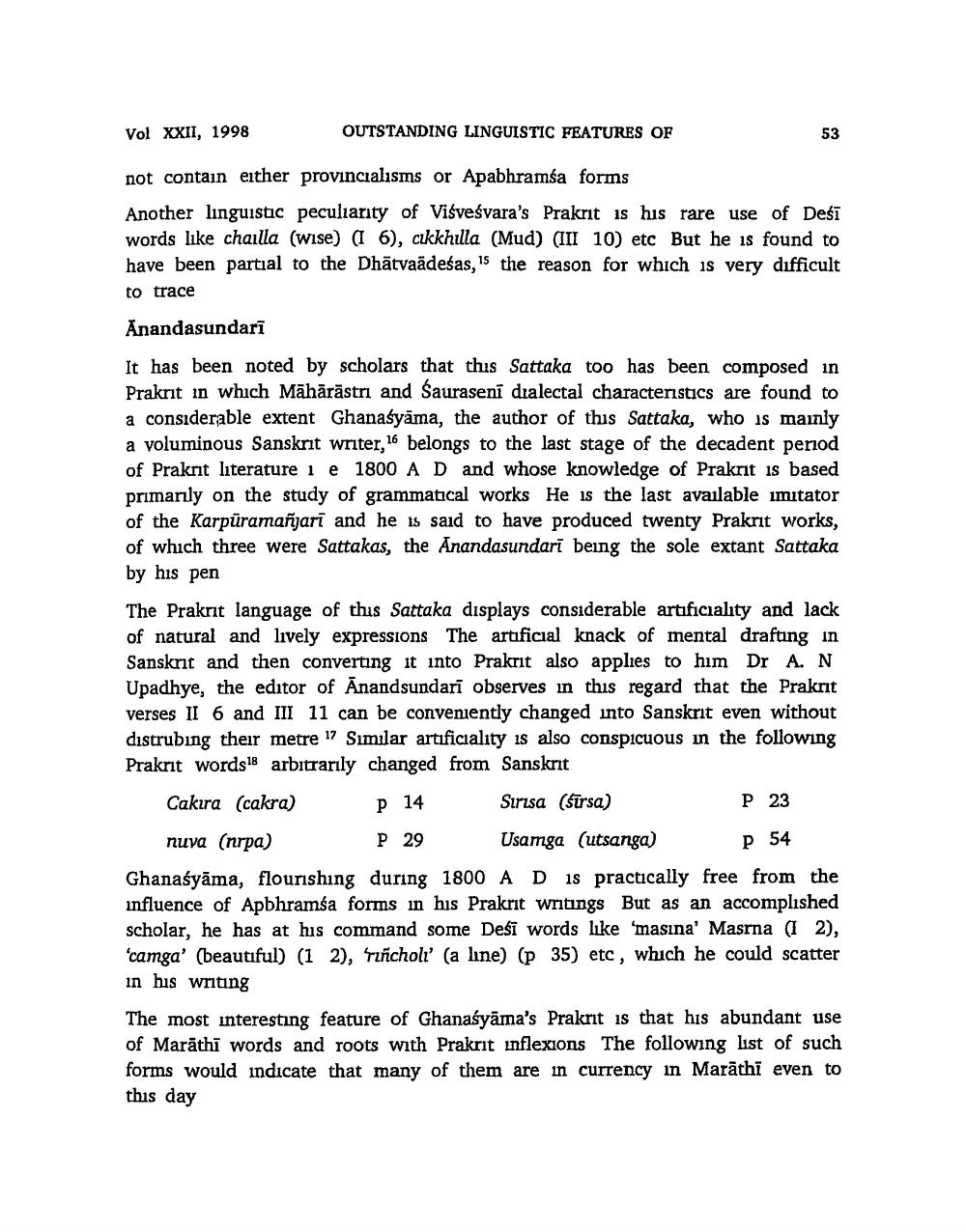________________
Vol XXII, 1998
OUTSTANDING LINGUISTIC FEATURES OF
not contain either provincialisms or Apabhramsa forms Another linguistic peculiarity of Visveśvara's Prakritis his rare use of Deśī words like chailla (wise) (I 6), cikkhulla (Mud) (III 10) etc But he is found to have been partial to the Dhātvaādeśas, is the reason for which is very difficult to trace Anandasundarī
It has been noted by scholars that this Sattaka too has been composed in Prakrit in which Māhārāstri and Sauraseni dialectal characteristics are found to a considerable extent Ghanaśyāma, the author of this Sattaka, who is mainly a voluminous Sanskrit writer, 16 belongs to the last stage of the decadent period of Prakrit literature 1 e 1800 A D and whose knowledge of Prakrit is based primarily on the study of grammatical works He is the last available imitator of the Karpūramañarī and he is said to have produced twenty Prakrit works, of which three were Sattakas, the Anandasundarī being the sole extant Sattaka by his pen The Prakrit language of this Sattaka displays considerable artificiality and lack of natural and lively expressions The artificial knack of mental drafting in Sanskrit and then converting it into Prakrit also applies to him Dr A. N Upadhye, the editor of Anandsundarī observes in this regard that the Prakrit verses II 6 and III 11 can be conveniently changed into Sanskrit even without distrubing their metre 17 Similar artificiality is also conspicuous in the following Prakrit words18 arbitrarily changed from Sanskrit Cakira (cakra) P 14 Sirusa (sūrsa)
P 23 nuva (nrpa) P 29 Usamga (utsanga) P 54 Ghanaśyāma, flourishing during 1800 A D is practically free from the influence of Apbhramsa forms in his Prakrit writings But as an accomplished scholar, he has at his command some Desī words like 'masına' Masrna (
12), 'camga' (beautiful) (1 2), riñcholi (a line) (
p 35) etc, which he could scatter in his writing The most interesting feature of Ghanaśyāma's Prakrit is that his abundant use of Marāthī words and roots with Prakrit inflexions The following list of such forms would indicate that many of them are in currency in Marāthī even to this day




